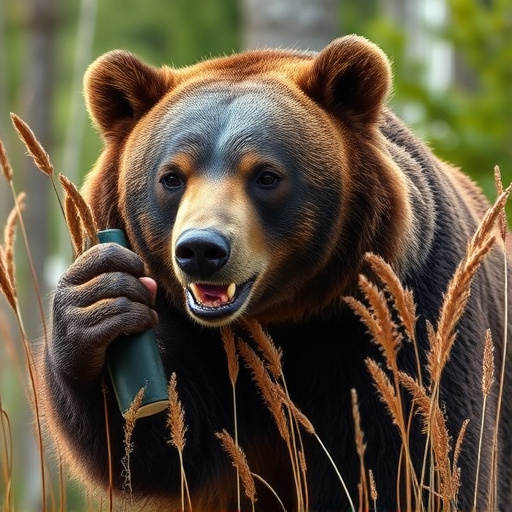Understanding bear spray effectiveness requires knowledge of its active ingredient, capsaicin, and wind direction. Ideal use involves spraying at a 30-degree angle away from you, maximizing reach to bears while minimizing self-exposure. Safety tips include practicing usage, keeping it readily available, recognizing brief duration (4-7 seconds), maintaining distance, avoiding eye contact, and planning an escape route.
Bear encounters can be intimidating, but understanding how bear spray works is crucial for your safety in grizzly territories. This article delves into the effectiveness of bear spray against charging bears, focusing on key factors like wind direction and offering essential safety tips for optimal use. By exploring these aspects, you’ll gain valuable insights to ensure a safer outdoor experience.
- Understanding Bear Spray Effectiveness
- Wind Direction: A Crucial Factor
- Safety Tips for Effective Use
Understanding Bear Spray Effectiveness
Understanding Bear Spray Effectiveness
Bear spray, also known as bear repellent, has been a go-to safety tool for outdoor enthusiasts when encountering bears in their habitat. Its effectiveness lies in creating a barrier between the user and the bear by releasing a potent mix of capsaicin (the active ingredient found in chili peppers) and other chemicals into the air. When properly applied, bear spray can deter aggressive behavior from both black and grizzly bears, giving users crucial time to escape or seek shelter.
The wind direction plays a significant role in the success of using bear spray. It’s recommended to always apply bear spray into the face of an approaching bear, preferably at a 30-degree angle with the wind blowing away from you. This ensures that the spray reaches the bear directly and minimizes its impact on your own breathing or eyes. Safety tips include practicing with the spray beforehand, keeping it within reach during outdoor activities, and understanding the range and duration of its effectiveness, which typically ranges from 4 to 7 seconds.
Wind Direction: A Crucial Factor
When using bear spray as a safety measure against charging bears, understanding wind direction is crucial. The effectiveness of bear spray heavily depends on how the wind is blowing at the time of deployment. If the wind is in your favor, it can carry the spray directly into the bear’s face, temporarily blinding and disorienting them. However, if the wind is against you, the spray might blow back towards you, rendering it less effective or even dangerous for your own safety.
Therefore, when preparing to use bear spray, always assess the wind conditions. Ideally, you want the wind blowing away from you, ensuring that any spray used will be directed towards the bear and not towards yourself. Bear spray safety tips include checking the wind direction before deploying the spray and moving to a safe distance if necessary. This simple step can significantly enhance your chances of effective protection during encounters with aggressive bears.
Safety Tips for Effective Use
When using bear spray, understanding the wind direction is crucial for its effectiveness. Always assess the wind before spraying; aim for the face and eyes of the bear, which are sensitive areas. If possible, keep the can upright and point it towards the approaching bear to maximize coverage.
Safety tips include keeping a safe distance and avoiding direct eye contact with the bear. Ensure you have a clear escape route planned. Practice using the spray in controlled environments to familiarize yourself with its range and effectiveness. Remember, bear spray is most effective as a deterrent when used early in an encounter; it can create enough distance for you to safely exit the area.
Bear spray can be an effective deterrent against charging bears, but understanding wind direction and following safety tips are crucial for its success. By knowing how to properly deploy bear spray, you can increase your chances of staying safe in bear country. Always stay alert, carry bear spray as a precaution, and follow local guidelines to ensure the best protection when encountering these majestic yet potentially dangerous animals.
